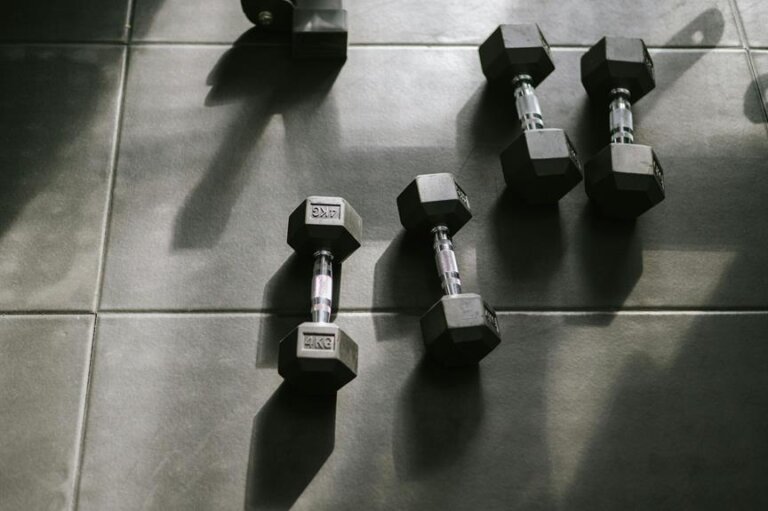The Science Behind High-Intensity Interval Training (HIIT)
When it comes to understanding the inner workings of High-Intensity Interval Training (HIIT), think of it as peeling back the layers of an onion. Each layer revealing a new aspect of its complexity and effectiveness.
From metabolic adaptations to muscle fiber recruitment, HIIT has been a subject of extensive scientific inquiry, shedding light on its profound impact on the human body.
But what truly sets HIIT apart from traditional exercise routines? The answer lies in the intricate dance between intensity and recovery, a delicate balance that unlocks the full potential of this training method.
Metabolic Adaptations to HIIT
When you engage in High-Intensity Interval Training (HIIT), your body undergoes significant metabolic adaptations to meet the demands of this intense workout regimen. One key change is an increase in your body's ability to consume oxygen post-exercise. This phenomenon, known as excess post-exercise oxygen consumption (EPOC) or the afterburn effect, allows your body to continue burning calories at a higher rate even after you've finished your HIIT session.
Additionally, HIIT boosts your anaerobic capacity, improving your muscles' ability to work without oxygen. This leads to an increase in the levels of enzymes involved in anaerobic metabolism, enhancing your overall performance during high-intensity activities.
Moreover, HIIT can enhance your body's glucose metabolism, making it more efficient at utilizing carbohydrates for energy. This can be particularly beneficial for individuals looking to improve their athletic performance or manage their blood sugar levels.
Impact on Aerobic Capacity
Boost your aerobic capacity with High-Intensity Interval Training (HIIT) as it significantly enhances your body's ability to utilize oxygen during intense workouts. HIIT involves alternating between short bursts of intense exercise and brief rest periods. This type of training pushes your cardiovascular system to adapt and improve its efficiency in delivering oxygen to your muscles.
Research shows that HIIT can lead to substantial improvements in aerobic capacity. By challenging your body with quick, intense intervals, you train your heart to pump blood more effectively and your muscles to use oxygen more efficiently. Over time, this can result in increased endurance and stamina, allowing you to sustain high-intensity activities for longer durations.
Moreover, HIIT has been found to be more time-efficient than traditional steady-state cardio exercises. In just a few minutes of HIIT, you can achieve similar or even greater aerobic benefits compared to longer sessions of moderate-intensity workouts. This makes HIIT a practical and effective option for individuals looking to boost their aerobic capacity without spending hours at the gym.
Effects on Fat Oxidation
To enhance your understanding of High-Intensity Interval Training (HIIT), it's crucial to delve into its impact on fat oxidation. HIIT has been shown to significantly increase fat oxidation during and after exercise. This means that your body becomes more efficient at using fat as a fuel source both during your workout and in the recovery period that follows.
During HIIT sessions, your body experiences metabolic adaptations that enhance its ability to oxidize fat. The intense bursts of activity followed by short rest periods push your body to tap into its fat stores for energy. This process not only helps in burning calories during the workout but also has a lasting effect on your metabolism.
Moreover, the post-exercise oxygen consumption, also known as the afterburn effect, is elevated after HIIT. This means that your body continues to burn calories at an increased rate even after you've finished your workout, further contributing to fat loss. Incorporating HIIT into your fitness routine can therefore be an effective strategy for improving fat oxidation and achieving your weight loss goals.
Role of EPOC in HIIT
The impact of High-Intensity Interval Training (HIIT) on fat oxidation extends beyond the workout itself, with a key component being the Role of Excess Post-Exercise Oxygen Consumption (EPOC) in enhancing metabolic processes.
EPOC refers to the increased rate of oxygen intake post-exercise to restore your body to its pre-exercise state. During HIIT, your body experiences an oxygen debt due to the intense nature of the workout, leading to a higher EPOC effect compared to steady-state cardio.
This elevated EPOC state results in continued calorie burn even after you've finished your HIIT session. The intense bursts of activity in HIIT create a significant oxygen deficit, which your body works to replenish during the recovery period. This process requires energy, leading to additional calorie expenditure post-workout.
Muscle Fiber Recruitment in HIIT
During High-Intensity Interval Training (HIIT), different muscle fibers are recruited to meet the demands of varying intensities, optimizing overall workout effectiveness. These fibers can be broadly classified into two main types: slow-twitch (Type I) and fast-twitch (Type II) muscle fibers. Slow-twitch fibers are primarily utilized during lower-intensity intervals, providing long-lasting energy through aerobic pathways. On the other hand, fast-twitch fibers are called upon during high-intensity intervals, contributing explosive power and strength through anaerobic pathways.
As you engage in HIIT, your body dynamically recruits these muscle fibers based on the intensity of the exercise. The rapid shifts between low and high intensities in HIIT workouts challenge your muscles to adapt quickly, leading to enhanced performance and efficiency. By targeting a wide range of muscle fibers, HIIT promotes muscle growth, endurance, and cardiovascular improvements simultaneously. This strategic recruitment of muscle fibers during HIIT not only boosts your workout results but also increases your metabolic rate, promoting calorie burn even after you've finished exercising.
Frequently Asked Questions
How Does the Timing of Meals Before and After HIIT Sessions Affect the Metabolic Adaptations Seen in the Body?
Timing your meals before and after HIIT sessions can impact how your body adapts metabolically. Eating strategically can optimize energy levels during workouts and aid in recovery. Consistency in meal timing can enhance the benefits of HIIT.
Can Individuals With Asthma or Other Respiratory Conditions Safely Participate in HIIT Workouts?
Yes, individuals with asthma or respiratory conditions can safely participate in HIIT workouts. Ensure to consult with your healthcare provider, adjust intensity as needed, and have rescue inhalers on hand for precaution during exercise.
Are There Any Specific Dietary Recommendations That Can Enhance the Effects of Fat Oxidation During Hiit?
To enhance fat oxidation during HIIT, focus on a balanced diet with adequate protein, healthy fats, and carbohydrates. Stay hydrated and consider consuming a small snack rich in carbs and protein before your workout for sustained energy.
How Does the Intensity and Duration of HIIT Sessions Impact the Duration and Magnitude of Excess Post-Exercise Oxygen Consumption (Epoc)?
When you increase the intensity and duration of your HIIT sessions, you can boost the duration and magnitude of EPOC. This means your body keeps burning calories even after you've finished working out, aiding in fat loss.
Are There Any Differences in Muscle Fiber Recruitment Between Different Types of HIIT Exercises, Such as Sprint Intervals Versus Cycling Intervals?
When comparing sprint intervals to cycling intervals in HIIT exercises, the muscle fiber recruitment can vary. Sprints focus more on fast-twitch fibers for explosive power, while cycling engages a mix of fast and slow-twitch fibers for endurance and sustained effort.
Conclusion
In conclusion, the science behind high-intensity interval training (HIIT) shows that it's an effective way to improve metabolic adaptations, increase aerobic capacity, enhance fat oxidation, and recruit muscle fibers.
By incorporating HIIT into your fitness routine, you can maximize your workout efficiency and see significant improvements in your overall health and fitness levels.
So, next time you hit the gym, consider adding some HIIT exercises to your routine for optimal results.






